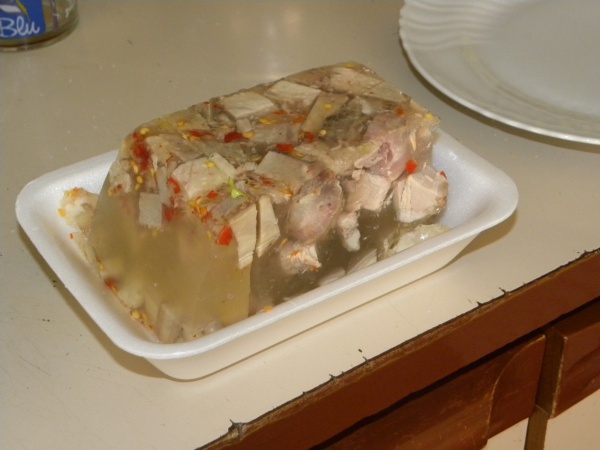Facts About Aspic
Aspic is a distinctive dish wherein ingredients are encased in gelatin derived from meat stock or consommé. It is also referred to as aspic gelée or aspic jelly. In the United States, similar sweet dishes made with commercial gelatin mixes are often labeled as jello salads.
The history of aspic dates back to the 10th century, with recipes appearing in one of the earliest known Arabic cookbooks. Initially, meat aspics were prevalent before the introduction of fruit- and vegetable-flavored varieties. During the Middle Ages, cooks discovered that thickened meat broth could solidify into jelly. The renowned chef Marie-Antoine Carême later popularized the use of aspic in France, particularly as a sauce for cold fish and poultry dishes, known as chaud-froid.
To prepare aspic, one uses stock that naturally gelatinizes due to the collagen in the meat. Various foods, such as meat, fruits, or vegetables, can be incorporated. Aspics are served on cold plates to prevent them from melting. When combined with cream, meat jellies are referred to as chaud-froid. Different meats may require additional gelatin to set properly, with veal stock being notably gelatin-rich. Fish stocks, however, often necessitate extra gelatin to maintain their form. Aspic can range from colorless to amber-hued and serves multiple purposes, including protecting food, enhancing flavor, and adding a decorative touch.
There are three primary types of aspic: delicate, sliceable, and inedible. Delicate aspic is soft, whereas sliceable aspic is firmer and typically molded. Inedible aspic is used solely for decorative purposes. Aspic is frequently employed to glaze food in culinary competitions and to create ornamental shapes. Pork jelly, made from inexpensive pork cuts, is a popular type of aspic enjoyed in many countries. In Serbia, a similar dish called pihtije is made from affordable pork meat.
Around the world, various cultures feature their own versions of aspic. In Eastern Europe, it is known as kholodets; in Korea, jokpyeon; and in Nepal, ta khaa. Other international variations include hladetina in Croatia, răcituri in Romania, and žolca in Slovenia. Aspic dishes are also prevalent in Denmark, Georgia, and numerous other countries, each showcasing unique ingredients and preparation methods.

 Bulgaria
Bulgaria